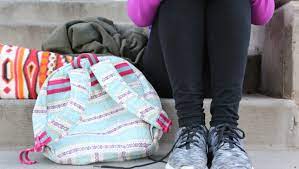Program helping homeless Santa Rosa students replicated by five other Florida counties
Pensacola News Journal | by Emma Kennedy | May 25, 2021
A Santa Rosa County School District program that holistically addresses the issues behind why homeless students struggle in school and helps families get into stable housing has become so successful that it’s being duplicated in at least five other counties across the state.
The issue is a cycle, according to Patti McKnight, the district’s federal programs director. If students are homeless or at risk of homelessness, they often face other issues — being tired or hungry in classes or lacking transportation, for example — that can lead to grades slipping or acting out.
The school district’s program, called Tenant-Based Rental Assistance, was launched in 2017 in partnership with the Florida Housing Finance Corp. and Opening Doors of Northwest Florida.
Families are eligible if they’re experiencing homelessness, have an income below 60% of the area median income and can contribute at least 30% of that income to their rent.
The program provides a voucher to pay the remaining balance of the rent for 12 months, and the students are eligible for case work and tutoring to provide any support needed to make them successful in the classroom.
“It’s not the people you would typically think of, it’s just that life has happened to them for some reason and they need that year to get themselves together,” McKnight said. “It’s an opportunity to have case management and social workers here with the school system to ensure the kids are successful.”
Since 2017, the Santa Rosa County program has served 41 families. In 2019, the Florida Housing Finance Corp. added Hernando County as a second pilot program, and in 2020 it underwent another expansion to add Alachua, Bay and Charlotte counties, based on the success of the first program locally.
Invisible problem? Why homelessness is a real issue in Santa Rosa County
Santa Rosa County School District social worker Shanna Schneider said although it’s a housing program, the support is also centered on ensuring students are successful after they’re in stable housing, which can include everything from getting the parents gas cards, doing laundry for the students at school so they have clean clothes and providing school supplies like pens and pencils.
Santa Rosa County schools have more than 690 students identified as homeless under the national standards, and for the social workers, a big part of the job is making sure those students don’t stand out as different from their peers.
“In Santa Rosa County, the vast majority of our homeless families are doubled up, which is where they can’t afford their own place, so the whole family’s in one bedroom or a family’s sleeping on the living room floor. There are some in motels or sheds or tents, but that’s the majority,” Schneider said.
Because of that and the county’s lack of homeless shelter, the issue may not be as visible in Santa Rosa County as it is in larger communities, she said. The eviction moratorium during the pandemic last year also has helped hide the issue, and students learning virtually have been less visible, which has led to a decrease in the number of students identified as homeless.
The social workers in the program expect a big shift when the moratorium ends June 30, with more housing available but more families homeless as a result.
“We have families that qualify who have vouchers, but there’s no housing for them and there’s going to be a cliff, there’s going to be a time when that’s lifted and there’s people out on the streets,” McKnight said. “Our families searching for housing are seeing rentals that would normally go for $700 or $800 and they’re $1,400 right now.”
Individual attention, tutoring make a difference
Some nonprofits in the community, like The Hope Church, partner with the Santa Rosa County School District to provide the homeless families with essentials like pillows, bedding, toiletries, pots and pans, and other household items that add up financially when moving to a new home.
The students are tutored either one-on-one or in small groups once or twice a week, and a group of teachers and social workers hold regular meetings to assess all the homeless students’ grades and performance, then identify issues and additional resources that could be needed.
When the program started in 2017, it was on a three-year funding cycle committing $250,000 each year, but it’s since been extended indefinitely, Schneider said.
Though the current situation with limited rental stock and increased homelessness has proved a challenge, the women said there have been dozens of success stories after the families’ year in the program.
One mom was able to purchase the home she rented through the program and about 95% of students will graduate to the next grade level at the end of the year.
“The success stories are amazing, we have one after another after another over the last few years,” said social worker Jo Anne Raught.






